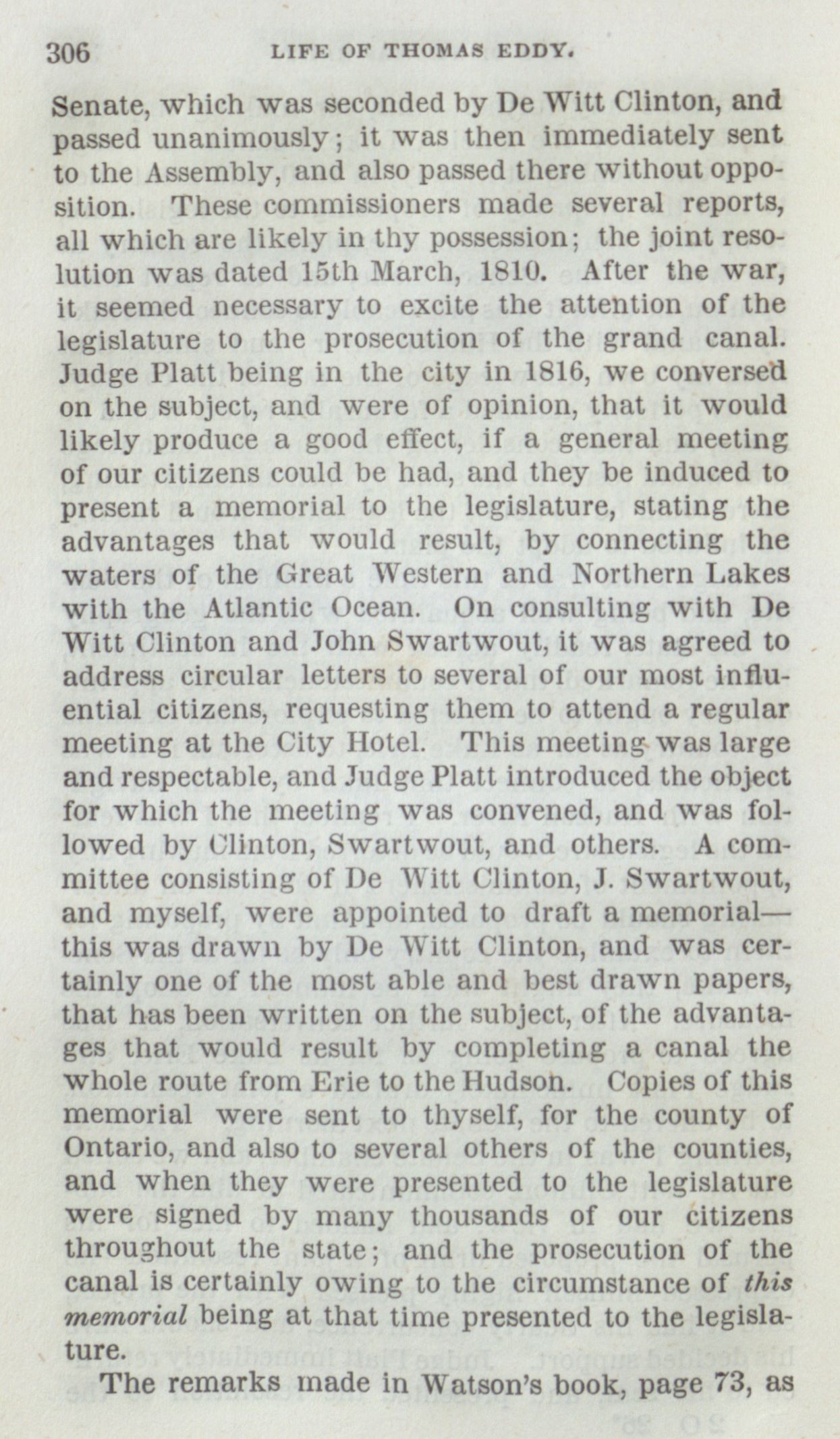Organization Information
Person Information
passed unanimously; it was then immediately sent
to the Assembly, and also passed there without oppo-
sition. These commissioners made several reports,
all which are likely in thy possession; the joint reso-
lution was dated 15th March, 1810. After the war,
it seemed necessary to excite the attention of the
legislature to the prosecution of the grand canal.
Judge Platt
Person Information
on the subject, and were of opinion, that it would
likely produce a good effect, if a general meeting
of our citizens could be had, and they be induced to
present a memorial to the legislature, stating the
advantages that would result, by connecting the
waters of the Great Western and Northern Lakes
with the Atlantic Ocean. On consulting with De
Witt Clinton
Person Information
Person Information
address circular letters to several of our most influ-
ential citizens, requesting them to attend a regular
meeting at the City Hotel. This meeting was large
and respectable, and Judge Platt
Person Information
for which the meeting was convened, and was fol-
lowed by Clinton
Person Information
Person Information
mittee consisting of De Witt Clinton
Person Information
Person Information
and myself
Person Information
this was drawn by De Witt Clinton
Person Information
tainly one of the most able and best drawn papers,
that has been written on the subject, of the advanta-
ges that would result by completing a canal the
whole route from Erie to the Hudson. Copies of this
memorial were sent to thyself, for the county of
Ontario
Place Information
and when they were presented to the legislature
were signed by many thousands of our citizens
throughout the state; and the prosecution of the
canal is certainly owing to the circumstance of this
memorial being at that time presented to the legisla-
ture.
The remarks made in Watson
Person Information

